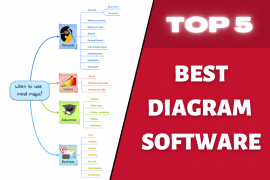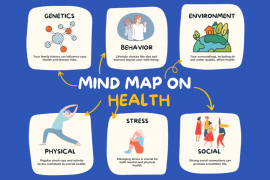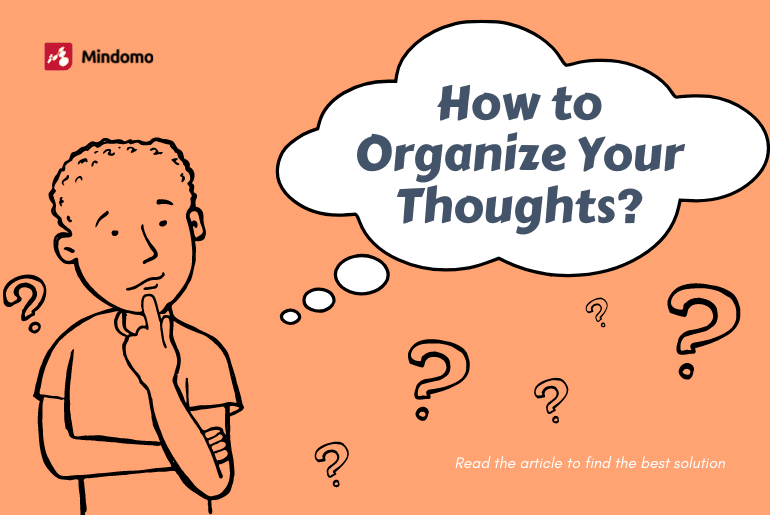
Organizing your thoughts can be a difficult task. Your mind is constantly racing, and it can be hard to focus on one thing. However, there are some simple tips that you can follow to help you organize your thoughts.
One of the best ways to organize your ideas and thoughts is to create a mind map. This is a visual representation of your thoughts and ideas. It can help you see how all of your thoughts connect.
Another great way to organize your thoughts is to keep a journal. This will give you a place to write down your thoughts and ideas. You can also use your journal to brainstorm new ideas.
Finally, you can also try using an app or software program to help you organize your thoughts. There are many different options available, and you can find one that works best for you.
Organizing your thoughts can be challenging, but it is possible. Following these simple tips will be easier, and you can better focus on your thoughts and ideas. You will also be able to remember your thoughts and ideas better. So, start organizing your thoughts today!
What are mind maps, and how do they work?
Mind maps are a tool that can be used to brainstorm, organize, and visualize thoughts and ideas. They are often used in the creative process to help unlock your creative side and develop new ideas. Mind maps can also be used to generate pie charts or brainstorming diagrams.
Mind maps work by taking all of the thoughts and ideas floating around in your head and organizing them into a cohesive structure.
This can be done by using index cards, sticky notes, or even just a piece of paper and a pen. Once all the thoughts and ideas are down on paper, you can start to see connections and patterns you may not have noticed before.
The mind mapping process is great for saving time and energy when coming up with new ideas. They can also be used to brainstorm with a friend or family member.
Mind maps are not just for the creative types; they can also be used to organize and plan anything from a simple to-do list to a complex project.
A mind map can be created using a mind map maker or simply drawing one out yourself. There are no rules or templates that you need to follow, so feel free to let your mind run wild and see where it takes you!
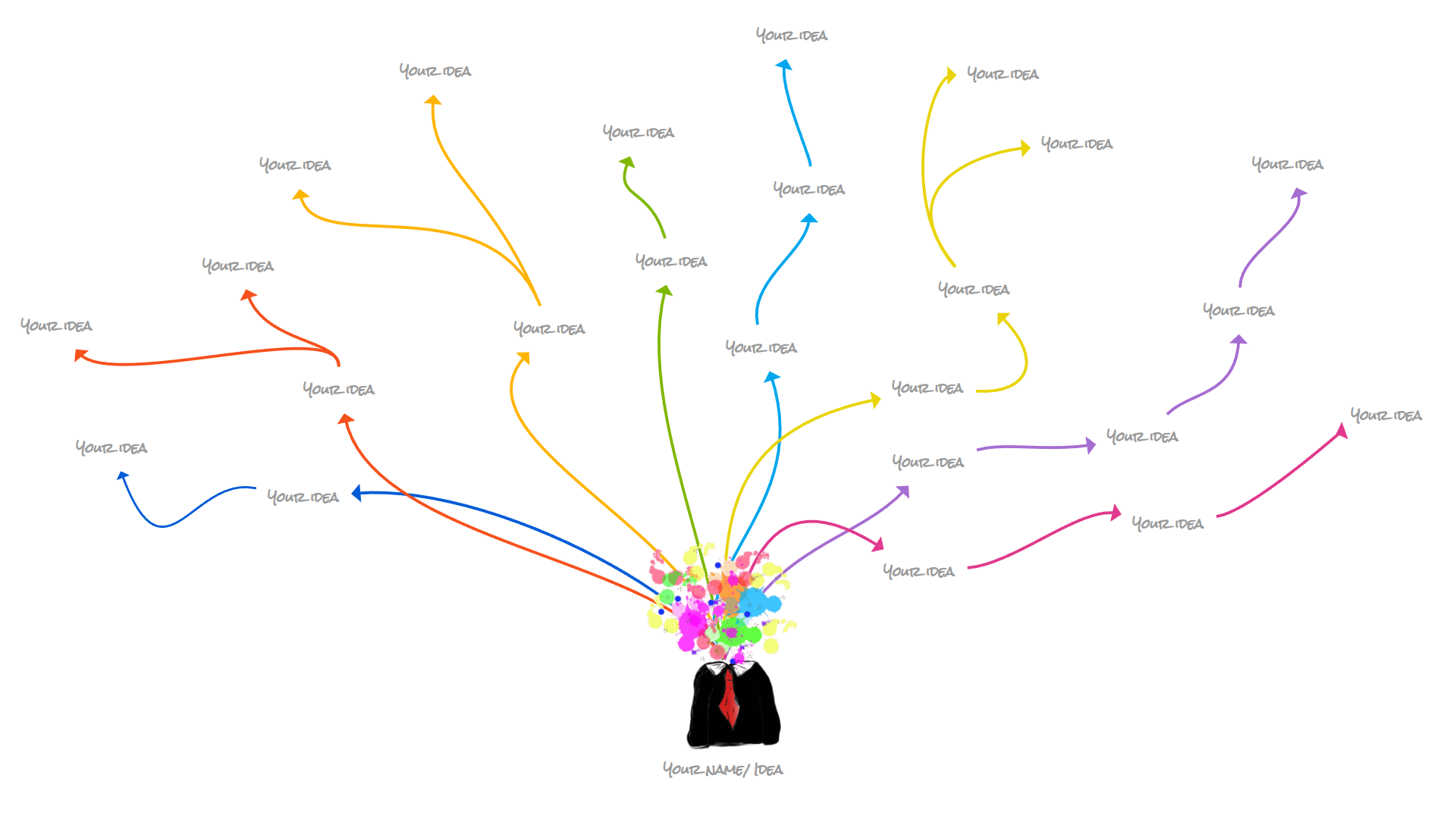
The benefits of using mind maps to organize your thoughts
Organizing your thoughts and ideas can be a difficult and time-consuming task, especially if you are someone who tends to think “outside of the box.” If this is the case, mind maps may be a great option.
Mind maps are diagrams that help you visually organize your thoughts and ideas. They can be used for brainstorming, taking notes, or even creating presentations. Mind maps are also a great way to unleash your creative side.
There are many benefits to using mind maps, including:
- You can quickly and easily jot down thoughts and ideas as they come to you.
- You can see the relationships between different thoughts and ideas.
- You can save time and energy by not having to search for index cards or sticky notes.
- You can create a mind map on nearly any surface, including paper, a whiteboard, or even your computer screen.
- You can use the Mindomo voice recorder tool to create audio notes attached to your mind maps.
If you are looking for a mind map generator, there are many online tools that you can use. Search for “mind map generator” in your favorite search engine. You can find here detailed comparison charts to find an alternative for each popular tool and use the best mind map app for you: an alternative to MindMeister, an alternative to XMind, an alternative to MindManager. Mindomo is a professional mind map tool that has a bunch of features that will help you create amazing diagrams in minutes.
Mind maps are an excellent tool for organizing your thoughts and ideas. If you find yourself struggling to organize your thoughts, give mind maps a try. You may be surprised at how helpful they can be!
Tips on how to make a mind map
A mind map is a great way to unleash your creative thoughts and ideas. It’s also an excellent tool for saving time and energy when brainstorming with a friend or family member. The best part about mind maps is that you can use them for anything!
Here are some tips on how to create a mind map:
- Start by writing down your main idea in the center of a piece of paper.
- Draw branches off the main idea, and write down related thoughts and ideas.
- Continue adding components and sub-branches until your thoughts and ideas are mapped out.
- Once you’re finished, you can add additional details, such as colors or images.
- You can also use a predefined template, which can be a great way to get started.
Mind maps are a great way to organize your thoughts and ideas visually. They can also be used as a brainstorming diagram or mind map ideas. So next time you’re feeling stuck, try creating a mind map.
Voice recorder tool of Mindomo
A Voice recorder is an excellent option for those who want to record audio files directly in the tool when editing diagrams or uploading audio files to the diagrams.
Mindomo offers the opportunity to record audio files directly on the device when editing diagrams or uploading audio notes to the diagrams.
A voice recorder is a great way to get your message across without having to type it out, and it’s also a great way to keep a record of what was said.
The voice recorder is an excellent option for those who want to record audio files directly in the tool when editing diagrams or uploading audio files to the diagrams.
Types of mind maps
As you already know, mind maps are a great way to brainstorm, organize, and visualize information. But did you know that there are different types of mind maps? And that each class can be used for various purposes.
First, let’s look at the three main types of mind maps: radiant, hierarchical, and fishbone diagrams.
1. Radiant mind map
Radiant mind maps are the simplest type of mind map. All the other types of mind maps are radiant but have more characteristics. This simple radiant mind map structure is often used for brainstorming because they allow you to quickly add ideas without worrying about the organization.
This radiant mind map was created by Tony Buzan, the inventor of the mind map. As you can see, it’s effortless – there’s just one main idea in the center, with supporting ideas around it (one-level mind map).
This makes it great for brainstorming because you can quickly add thoughts and ideas without worrying about the organization.
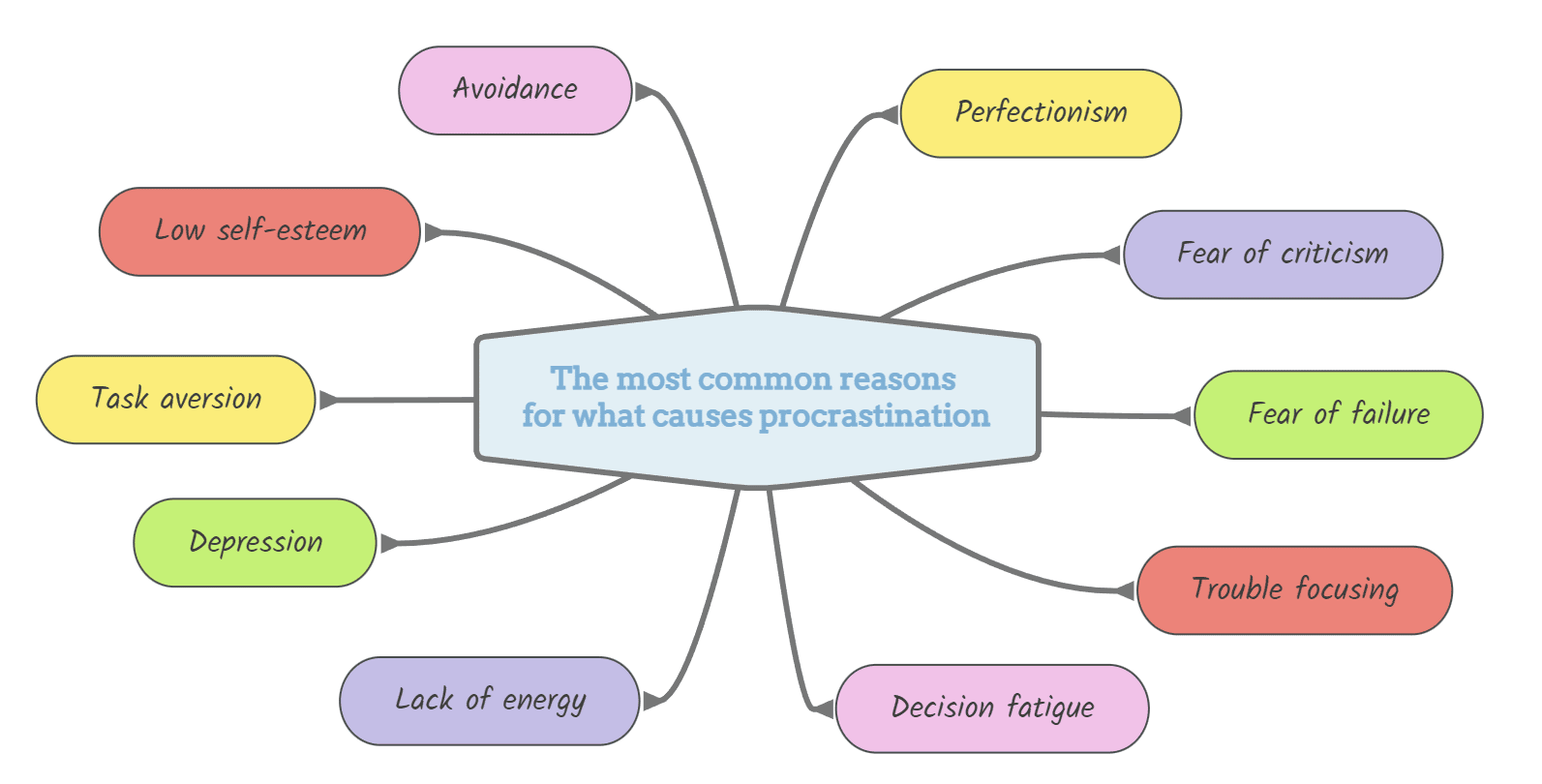
2. Hierarchical mind map
Hierarchical mind maps are more structured than linear mind maps. They’re often used to organize information or ideas because they let you add detail and structure to your thoughts and ideas.
There are different levels of detail, and the ideas are organized into categories. This makes collecting information or ideas great because you can add detail and structure to your thoughts.
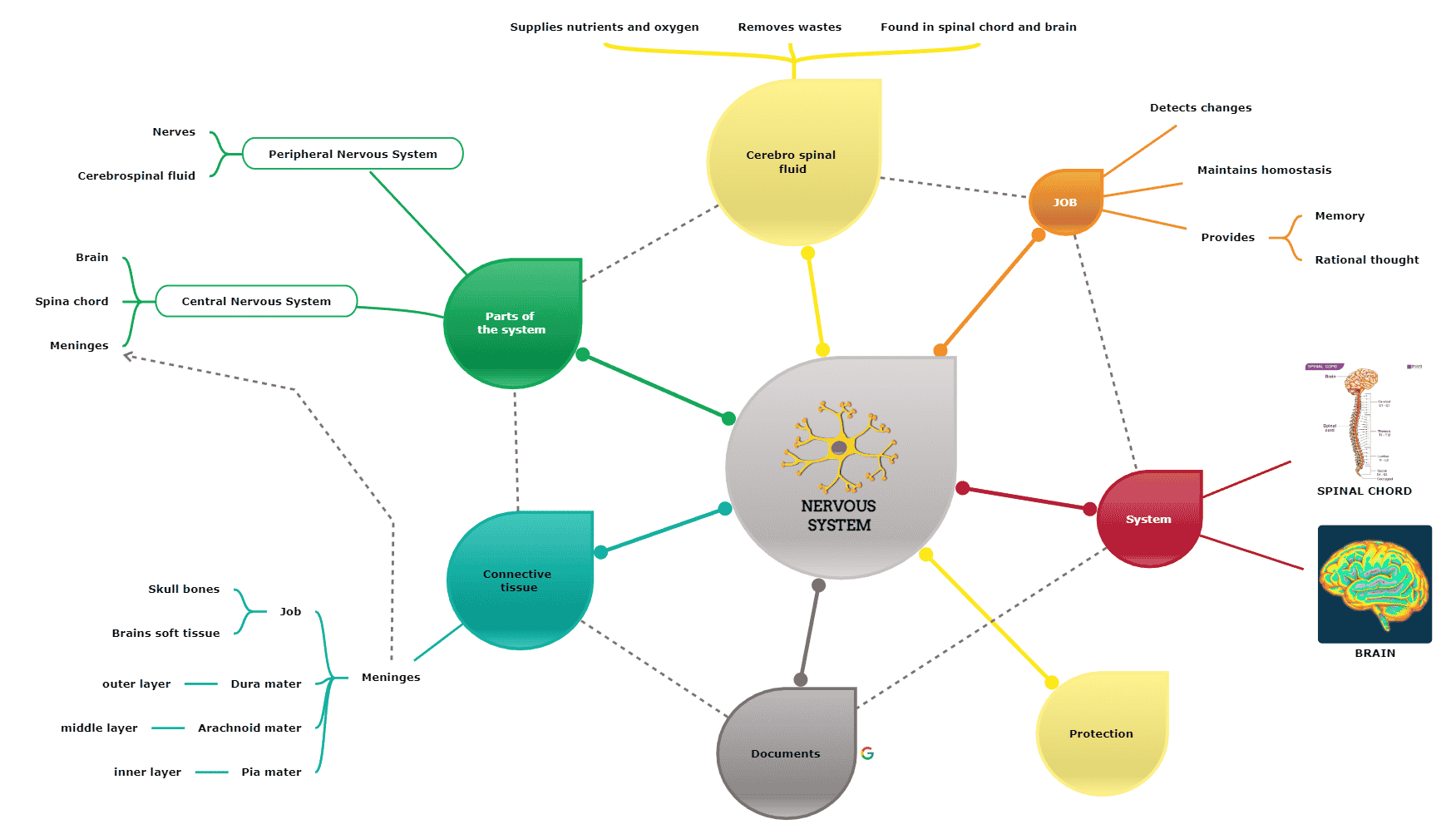
3. Fishbone diagram (Ishikawa diagram)
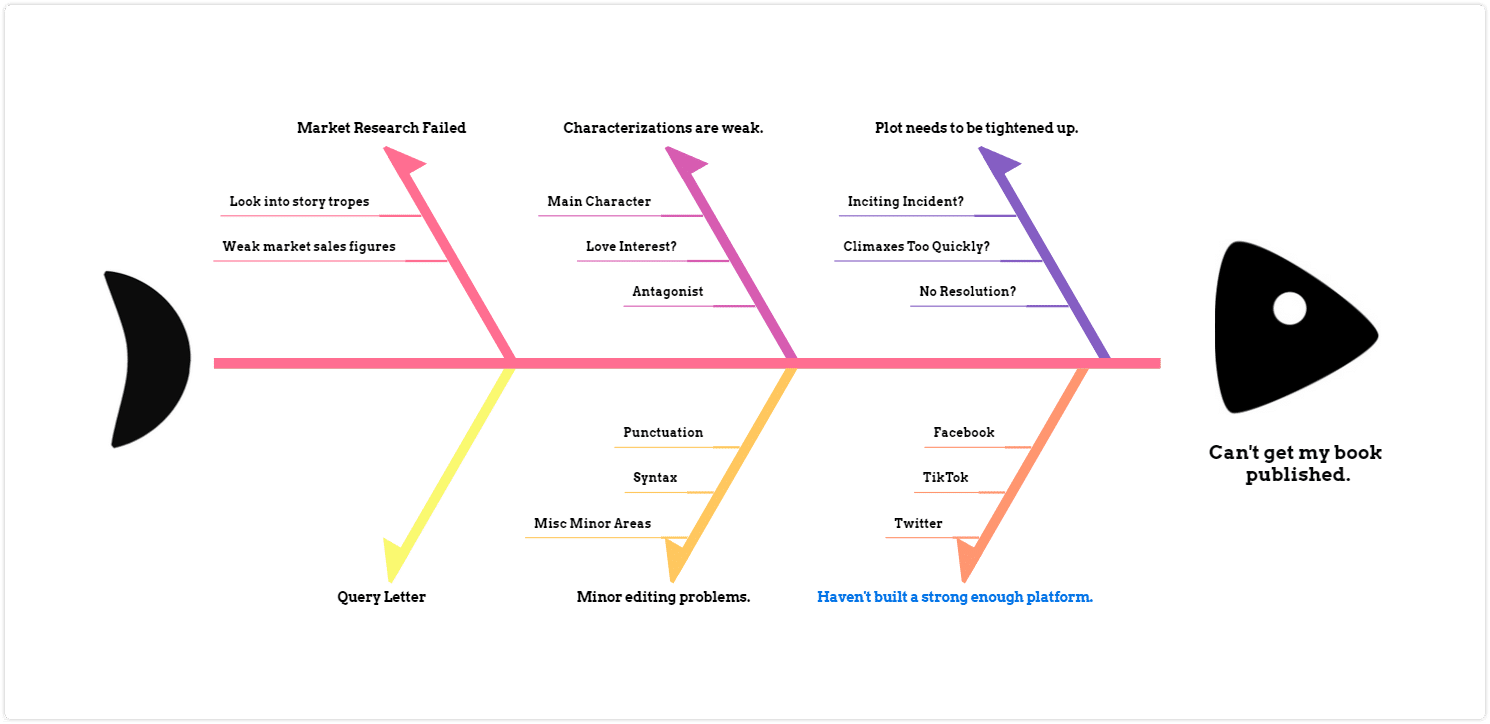
The fishbone diagram is a cause and effect diagram. It is basically a type of mind map, having the radiant structure, the main topic being the problem statement (the cause).
You can try this type of visual representation by using the fishbone diagram templates on the Mindomo library.
Tips for using mind maps to improve productivity and creativity
Mind mapping is a brainstorming technique that can generate new ideas or visualize and organize thoughts and ideas. You can create mind maps using index cards, sticky notes, or even just a pen and paper.
Here are some tips for using mind maps to improve productivity and creativity:
- Replace index cards and sticky notes with writing your thoughts and ideas in virtual diagrams.
- Create a mind map or a concept map to visualize your thoughts and ideas.
- Use a mind map generator to create a mind map and add visual elements (images, icons, videos, colors, different fonts, shapes, lines, etc.) – read more about why a mind map generator is an essential tool
- Brainstorm with a friend or family member to generate new ideas.
- Get in touch with your creative side when creating a mind map.
- Create a pie chart to organize your thoughts and ideas.
These tips will help you unleash your creative potential and improve your productivity.
So get started today and see how mind mapping can help you be more productive and creative!
Keep it smart, simple, and creative!
The Mindomo Team


